 In our previous blog, we talked about How to Start Your Own Shrimp Farm. In this blog, we are going to discuss how to manage your farm, control the quality of your pond water, and keep your farm free from disease and predators. In our later blogs, we will also cover some valuable aspects of marketing, processing, and economic feasibility, so keep reading our blogs regularly. These are very important factors in successful aquaculture and fish farming, whether you are raising shrimp or any other type of fish in your home pond, or in commercial fish farms.
In our previous blog, we talked about How to Start Your Own Shrimp Farm. In this blog, we are going to discuss how to manage your farm, control the quality of your pond water, and keep your farm free from disease and predators. In our later blogs, we will also cover some valuable aspects of marketing, processing, and economic feasibility, so keep reading our blogs regularly. These are very important factors in successful aquaculture and fish farming, whether you are raising shrimp or any other type of fish in your home pond, or in commercial fish farms.
Managing Water Quality
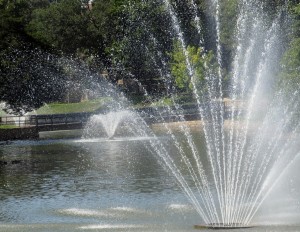 Keeping your water quality suitable for farmed fish is very important, whether you are farming , catfish, tilapia, or any other types of fish. You need to have a good flow of oxygen through aerators, keep water temperatures optimal, maintain a good pH balance, keep predators away, and keep water clean from weeds, germs, and diseases.
Keeping your water quality suitable for farmed fish is very important, whether you are farming , catfish, tilapia, or any other types of fish. You need to have a good flow of oxygen through aerators, keep water temperatures optimal, maintain a good pH balance, keep predators away, and keep water clean from weeds, germs, and diseases.
Aeration
The amount of oxygen dissolved in the water is very important. With proper levels of oxygen in the water, everything lives, and so, you need to have equipment to supply and monitor proper oxygen levels in the water. To test the oxygen levels in your pond, use an electronic oxygen meter, or a chemical oxygen level testing kit, based on the size of your farm. There are several methods you can use for the aeration for your pond. These include blowers, agitators, rotating wheels, air compressors, and fountains. The most sustainable methods of aeration could include solar powered rotating wheels that mix air into the water constantly. It would be a more energy efficient way. Shooting water into the air, using a water fountain or using a blower would use more energy and be less cost-effective. However, for home based fish farms, where a display is desirable, you could use a water fountain to make your pond attractive, and thus serving two purposes at the same time. Fountains also circulate the water of top layer without disturbing the cooler bottom layer.
Temperature control
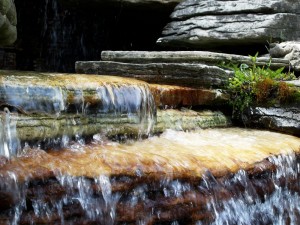 Keeping the water temperature at an optimum level is important, especially if your farm is located in a cooler region of the country. Most shrimp farms are located in warmer countries where shrimp is raised year round, and therefore, shrimp farming is suitable in the southern parts of the United States. Shrimps can be grown and raised easily from mid-April to November. Using a solar heater or solar heated greenhouses during the cold fall season can extend the growth of farmed fish. You may use an electric water heater for your home pond and circulate water throughout the pond for best results. Shrimps are warm water species, and the ideal temperature for growth of shrimp is between 57–84 °F.
Keeping the water temperature at an optimum level is important, especially if your farm is located in a cooler region of the country. Most shrimp farms are located in warmer countries where shrimp is raised year round, and therefore, shrimp farming is suitable in the southern parts of the United States. Shrimps can be grown and raised easily from mid-April to November. Using a solar heater or solar heated greenhouses during the cold fall season can extend the growth of farmed fish. You may use an electric water heater for your home pond and circulate water throughout the pond for best results. Shrimps are warm water species, and the ideal temperature for growth of shrimp is between 57–84 °F.
Nitrogen and toxicity control
Concentration of nitrogen and toxicity of the pond water needs to be kept at a lower level. Test samples from your pond periodically to ensure that nitrogen is kept at a safe level. A nitrogen level higher than 0.1 ppm would be harmful for the fish pond. A properly circulated pond would keep the nitrogen and ammonia levels low. It would also increase the biomass of shrimps at harvest.
pH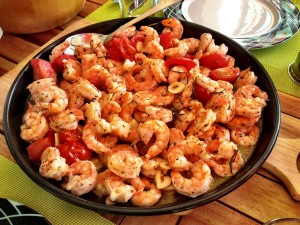
A high pH level would increase the mortality rate of shrimps. It would also mean a higher rate of ammonia in the water. The pH level should be kept between to 6.5 and 9.5; a higher pH would mean that un-ionized toxic ammonia is present in the water. A lower pH would indicate acidic water, which would also kill your fish. A dense algae bloom would cause higher pH levels in the water. Limiting algae growth would eliminate higher alkaline levels from being present in the water. Adding limestone to the pond would minimize formation of acidic water in the pond.
Controlling algae
To get rid of algae, use eco-friendly methods to control weeds. Make sure that the method you use is safe for your shrimps. Test your herbicides first before applying it to the pond. Put several of your shrimps in a plastic bucket and add some pond water. Test to see if the concentration of the herbicide is safe to use.
Predator control
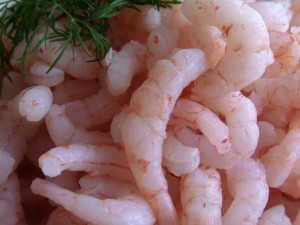 Certain kinds of birds, mammals, reptiles, fish, and birds can become predators for your shrimp farm. If your farm is in the wild, extending over a large area, it could attract a wide variety of wildlife and predators. Birds and animals will also try to find foraging opportunities from your pond. Use proper fencing to keep most crawling predators and reptiles out. Some birds feed on weak or diseased fish, whose impacts are minor. However, it is important that you remove any dead bodies from the pond, or it will attract more birds and disease. Birds and animals can also spread diseases by carrying pathogens in their stomach and fecal matter. They are also responsible for spreading parasites and other diseases. Fish farmers must be aware of predator control methods concerning endangered species. Water Snakes are also harmful for shrimp farming as they directly feed on shrimps. Remove all harmful predatory fish and reptiles before adding juvenile shrimps to your pond and remove any unwanted species from the pond. Use a nonlethal, non toxic method of predator control.
Certain kinds of birds, mammals, reptiles, fish, and birds can become predators for your shrimp farm. If your farm is in the wild, extending over a large area, it could attract a wide variety of wildlife and predators. Birds and animals will also try to find foraging opportunities from your pond. Use proper fencing to keep most crawling predators and reptiles out. Some birds feed on weak or diseased fish, whose impacts are minor. However, it is important that you remove any dead bodies from the pond, or it will attract more birds and disease. Birds and animals can also spread diseases by carrying pathogens in their stomach and fecal matter. They are also responsible for spreading parasites and other diseases. Fish farmers must be aware of predator control methods concerning endangered species. Water Snakes are also harmful for shrimp farming as they directly feed on shrimps. Remove all harmful predatory fish and reptiles before adding juvenile shrimps to your pond and remove any unwanted species from the pond. Use a nonlethal, non toxic method of predator control.
Disease control
If you have been keeping your water clean, disease would not be a significant problem for your pond. However, one disease that seems to affect some farms is spots on the shells, caused by a bacterial infection. This disease breaks down the outer skeleton of the shrimps 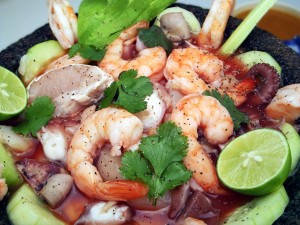 and eventually kills them. Algae and insect eggs may also be present on shells. Most of these diseases can be avoided by handling the infected shrimps carefully, and separating any infected shrimps before it becomes a serious problem.
and eventually kills them. Algae and insect eggs may also be present on shells. Most of these diseases can be avoided by handling the infected shrimps carefully, and separating any infected shrimps before it becomes a serious problem.
We hope you liked the information given here in this blog so far. Our next article will contain information on harvesting, marketing, and the economic aspects of fish farming, so please comeback soon. Until then, stay well, and we will be back with another blog on aquaculture and shrimp farming.
P.S: -Please add a comment in the comment box below and let us know your thoughts about this post. Please don’t hesitate to contact us with any questions or comments.
Source: WorldWide Aquaculture




If you run an aquaponics system some of the “aeration” or oxygenation comes from the symbiotic plants in the system. As you mentioned tilapia: they seem to be only outdone by pangasius when it comes to living in high densities or brackish waters (pangasius seems to actually “breathe” air from above water in dire circumstances). Since the tilapia will be a lean source of protein with no mercury, the FDA recommends it e.g. for pregnant women.
Thank you for your insight and for reading our articles!